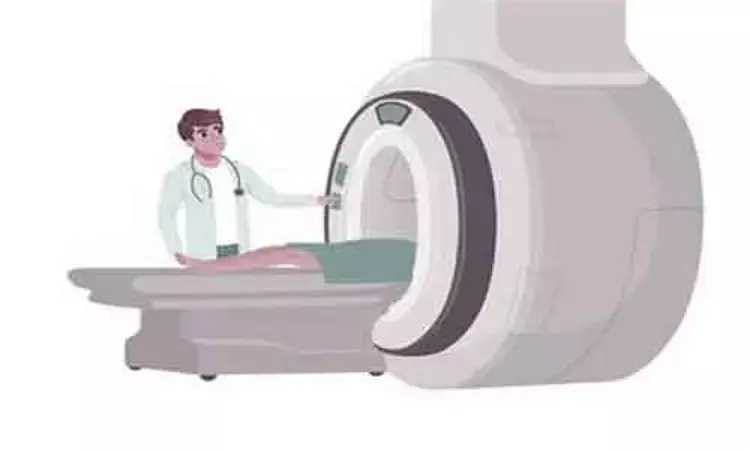- Home
- Medical news & Guidelines
- Anesthesiology
- Cardiology and CTVS
- Critical Care
- Dentistry
- Dermatology
- Diabetes and Endocrinology
- ENT
- Gastroenterology
- Medicine
- Nephrology
- Neurology
- Obstretics-Gynaecology
- Oncology
- Ophthalmology
- Orthopaedics
- Pediatrics-Neonatology
- Psychiatry
- Pulmonology
- Radiology
- Surgery
- Urology
- Laboratory Medicine
- Diet
- Nursing
- Paramedical
- Physiotherapy
- Health news
- Fact Check
- Bone Health Fact Check
- Brain Health Fact Check
- Cancer Related Fact Check
- Child Care Fact Check
- Dental and oral health fact check
- Diabetes and metabolic health fact check
- Diet and Nutrition Fact Check
- Eye and ENT Care Fact Check
- Fitness fact check
- Gut health fact check
- Heart health fact check
- Kidney health fact check
- Medical education fact check
- Men's health fact check
- Respiratory fact check
- Skin and hair care fact check
- Vaccine and Immunization fact check
- Women's health fact check
- AYUSH
- State News
- Andaman and Nicobar Islands
- Andhra Pradesh
- Arunachal Pradesh
- Assam
- Bihar
- Chandigarh
- Chattisgarh
- Dadra and Nagar Haveli
- Daman and Diu
- Delhi
- Goa
- Gujarat
- Haryana
- Himachal Pradesh
- Jammu & Kashmir
- Jharkhand
- Karnataka
- Kerala
- Ladakh
- Lakshadweep
- Madhya Pradesh
- Maharashtra
- Manipur
- Meghalaya
- Mizoram
- Nagaland
- Odisha
- Puducherry
- Punjab
- Rajasthan
- Sikkim
- Tamil Nadu
- Telangana
- Tripura
- Uttar Pradesh
- Uttrakhand
- West Bengal
- Medical Education
- Industry
Portable MRI- bringing MRI to bedside in stroke patients

DALLAS, Feb. 12, 2020 -- At present patients have to travel to a location of a high-field MRI device for diagnosis of stroke causing significant delay in diagnosis. However, Advances in low-field MRI have enabled acquisition of clinically useful images using a portable device at bedside.
A portable, low-field Magnetic Resonance Imaging (MRI) system may become a safe and practical way to get accurate brain images at a patient's bedside.The research shall be presented at the American Stroke Association's International Stroke Conference 2020 - Feb. 19-21 in Los Angeles.
"We've flipped the concept from having to get patients to the MRI to bringing the MRI to the patients," said Kevin Sheth, M.D., senior author and chief physician, Division of Neurocritical Care and Emergency Neurology at Yale School of Medicine and Yale New Haven Hospital in Connecticut. "This early work suggests our approach is safe and viable in a complex clinical care environment."
Eighty-five stroke patients (46% women, age 18-96, 46% ischemic stroke, 34% intracerebral hemorrhage, 20% subarachnoid hemorrhage) received bedside, low-field MRI within seven days of symptom onset. The exam time averaged about 30 minutes, and most patients were able to complete the entire exam. However, five patients could not fit into the 30-centimeter opening of the MRI machine, and six patients experienced claustrophobia, factors which halted their test.
"We started this research several years ago because obtaining accessible, meaningful brain imaging for patients has been a major worldwide health care gap for decades," Sheth said. "The whole thing works because we are using low-field magnets to acquire brain images after a stroke."
"High-field magnets are the cornerstone of commercial MRIs. The portable, low-field MRI could be used at hospitals that currently have a high-field MRI and in any other setting where an MRI is currently not available."
He added that the portable MRI devices will also decrease need for a special power supply, cooling requirements, cost and other barriers that currently limit easy patient access
In addition, the low-field, bedside MRI scanner did not interfere with other equipment, and metals did not need to be removed from the room. No significant adverse events were reported.
"There's a lot of work to do, however, we've cracked the door open for bringing this technology to any setting, anywhere. In rural settings, urban advanced hospitals and in remote villages in areas of the world where it's hard to get an MRI - not anymore," Sheth said.
Sheth said next steps include scanning more patients, improving image quality, using the devices in multiple settings and using machine learning to extract as much meaningful information as possible.
For further reference log on to:
https://newsroom.heart.org/news/portable-mris-bring-diagnostics-to-stroke-patients-bedside?preview=3b4877b0cc6ab5cccb4a632164c0b028
Dr Kamal Kant Kohli-MBBS, DTCD- a chest specialist with more than 30 years of practice and a flair for writing clinical articles, Dr Kamal Kant Kohli joined Medical Dialogues as a Chief Editor of Medical News. Besides writing articles, as an editor, he proofreads and verifies all the medical content published on Medical Dialogues including those coming from journals, studies,medical conferences,guidelines etc. Email: drkohli@medicaldialogues.in. Contact no. 011-43720751


